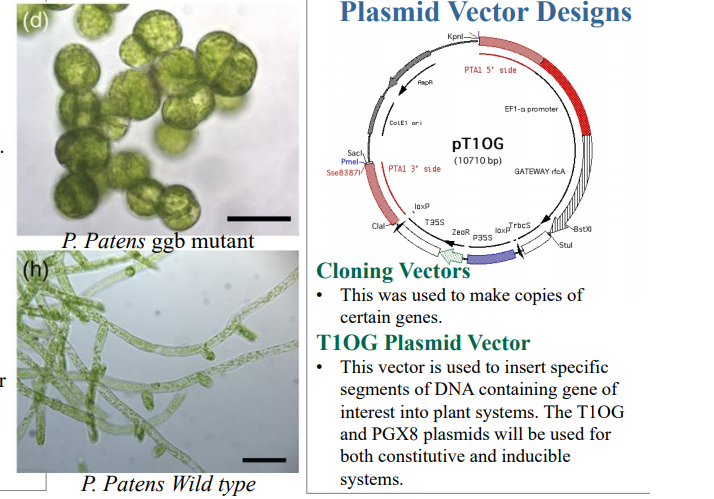“Explore to what extent new materials synthesized through synthetic biology can yield superior structural polymers or resins with programmable lifetimes.”
Bailey Hume, Jesse Rozsa, Hyun Jin Jung, and Mark P. Running are researchers at University of Louisville, focused on a unique area of materials science in bioprinting as detailed in their recently published study, ‘Bioproduction of Molecules for Structural 3D Printing Filaments.’
The goal of the research overall was to create a material that is organic, conductive, and biodegradable, resulting from the development of a ggb knockout mutant line of P. patens meant to be ‘immortal’ and offer higher performance then ‘wild-type strains’ used in bioreactors. Affordability was a requirement also as the researchers searched for a renewable source that would also be suitable in an industrial setting, making use of the formidable benefits included with 3D printing.
P. patens is also known as Spreading Earth Moss with a sequenced genome that is often now used in biotechnology in bioreactors and as a model organism.
The material created through this research is meant to be used by KAMPERS participants.
“The project, titled the Kentucky Advanced Partnership for Enhanced Robotics and Structures (or KAMPERS), will harness the collective research power of 40 multidisciplinary researchers from the eight Kentucky universities and colleges, which include UK, UofL, Eastern Kentucky University (EKU), Kentucky State University (KSU), Morehead State University (MSU), Somerset Community College, Transylvania University (TU) and Western Kentucky University (WKU).”
This study is NSF funded and “KAMPERS, will develop materials for flexible electronics, produce 3D printed structures, and integrate sensing and other electronic functions into these structural elements to advance human-machine interfaces. ”
Different model systems were dissected by natural enzymes as the researchers continued on their quest to find natural resources considered to be ‘green’ and able to be broken down organically.
“Common model systems that have been studied include Arabidopsis, tobacco, and maize. DNA is inserted randomly into these model systems in a variety of ways in which insert foreign DNA into a host. Specifically, in Physcomitrella patens homologous recombination gene replacement can be used to insert foreign DNA. This system has been studied extensively over the past decade and we plan to utilize this system to produce green materials for industry,” explained the researchers.
Genetic tests/extraction was done through:
- Antibiotic selection
- Electrophoresis
- PCR
- RT-qPCR
- Western blots
- Sequencing
Antibiotics used were meant to create selective cells featuring ‘genes of interest,’ and to be grown in liquid over several days in the lab.
The researchers also considered the following:
- Thin layer chromatography – identify of interest materials
- Liquid chromatography – separate materials into fractions
- Gas chromatography – quantify composition of products
To ensure and confirm that genetic modification did, in fact, take place, sequencing was performed to evaluate the targeted genes. Each E.coli cell divides, with vectors also reproducing.
“After the vectors have been harvested from the cells, restriction enzymes will be used to ascertain our gene of interest from the cell,” concluded the researchers. “Finally, these genes of interest will be placed into destination vectors which will undergo transformation into our model system and therefore homologous recombination as well.
“RNA extraction, agarose gel electrophoresis, and PCR will each be used to evaluate the extent of the genetic modification in the P. patens. To ensure and confirm that genetic modification did, in fact, take place, sequencing will be done to identify the genes of interest in their specific frames.”
What do you think of this news? Let us know your thoughts; join the discussion of this and other 3D printing topics at 3DPrintBoard.com.
[Source / Images: ‘Bioproduction of Molecules for Structural 3D Printing Filaments’]Subscribe to Our Email Newsletter
Stay up-to-date on all the latest news from the 3D printing industry and receive information and offers from third party vendors.
You May Also Like
Printing Money Episode 17: Recent 3D Printing Deals, with Alex Kingsbury
Printing Money is back with Episode 17! Our host, NewCap Partners‘ Danny Piper, is joined by Alex Kingsbury for this episode, so you can prepare yourself for smart coverage laced...
Insights from Cantor Fitzgerald on AM’s Q1 2024 Landscape
A recent survey by Cantor Fitzgerald sheds light on the persistent challenges within the additive manufacturing (AM) industry in the first quarter of 2024. Based on responses from 38 industry...
3D Printing Financials: Xometry’s Scaling up and Strong Start to 2024
Xometry (Nasdaq: XMTR) kicked off 2024 with strong results, boosting its marketplace and technology to new heights. Both revenue and gross margin soared, fueled by an expanding global network of...
3D Printing Financials: Desktop Metal Targets Recovery Amid Net Losses and Revenue Downturn
Despite facing a decline in revenue and the persistent challenges of a tight economic climate, Desktop Metal (NYSE: DM) is making strides toward operational efficiency. The first quarter of 2024...


































